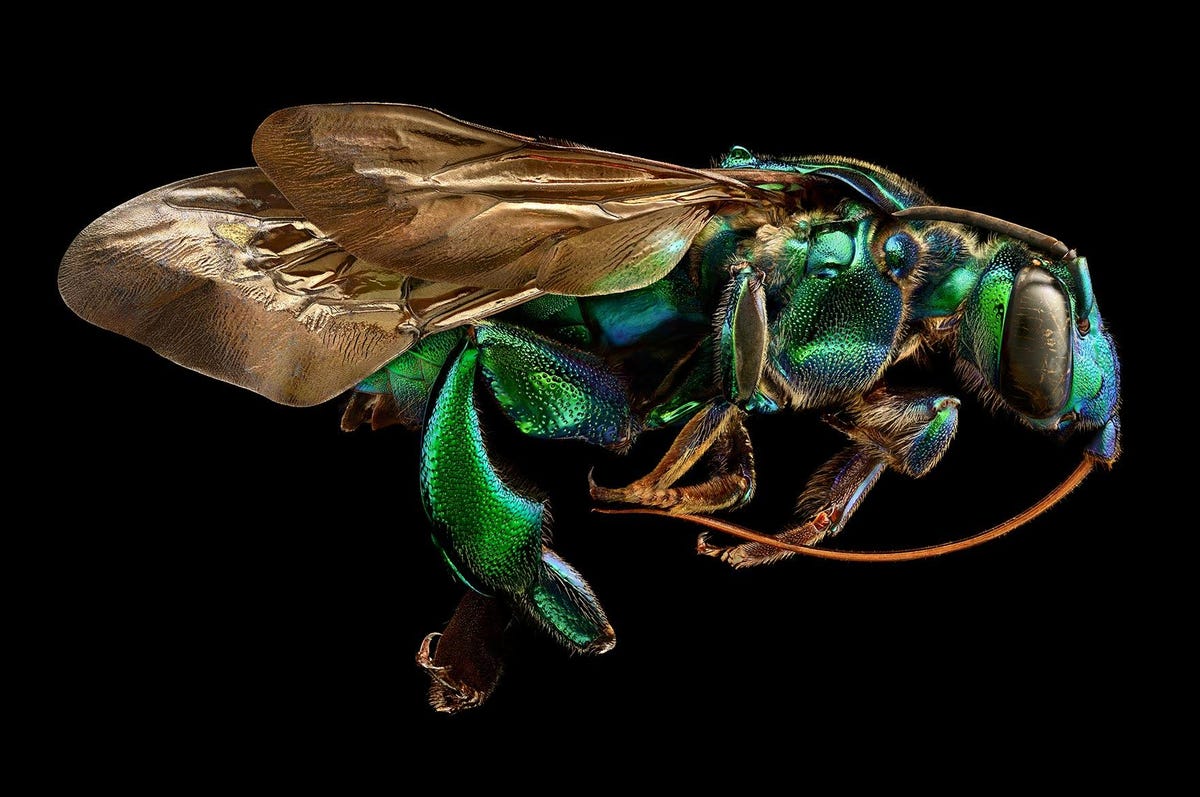Insects like you've never seen them before (pictures)
A British photographer uses up to 10,000 insect photos to make each of these pieces of stunningly detailed art.

British photographer Levon Biss painstakingly photographs every section of an insect's body separately, then combines the photos into one amazing image.
His images will appear in "Microsculpture," a new photography exhibit coming to England's Oxford Museum of Natural History on May 27.
This photo shows the Orchid Cuckoo Bee.
A Tiger Beetle. "Most of my final images are made up of between 8,000 and 10,000 images," photographer Levon Biss said. Each completed image takes between two and three weeks of work.
Levon Biss' photographs capture insects, like this
Ground Beetle, in remarkable detail.
A Green Tiger Beetle. Twenty-four of Levon Biss' final images will appear in the Oxford Museum of Natural History, and they're displayed bigger than even the bugs in your worst nightmares. A 10-millimeter insect is shown as a 3-meter (9.8 foot) print, with the real bug on view right along with it.
Another shot of the Orchid Cuckoo Bee.
The Branch-Backed Treehopper appears to be dancing in this shot.
Marion Flightless Moth. For photography buffs, Levon Biss shoots with a 36-megapixel camera with a 10x microscope objective attached to it via a 200mm prime lens.
A Jewel Longhorn Beetle seems to glow in this image by Levon Biss.
A Splendid-Necked Dung Beetle. Levon Biss uses Photoshop to bring all his individual pictures of insect parts together into one final image of a complete bug.
A Tortoise Beetle. Can't make it to the exhibit? It's possible to zoom in on the images online for more detail.
A Flying Saucer Trench Beetle. All bugs shown in the exhibit come from the
Oxford Museum of Natural History's entomology collection, which contains what is believed to be the world's oldest pinned insect specimen.
Here's a Darkling Beetle through Levon Biss' lens.
"I will light and shoot just one antennae, then after I have completed this area I will move onto the eye and the lighting setup will change entirely to suit the texture and contours of that part of the body," the photographer said. "I continue this process until I have covered the whole surface area of the insect."

